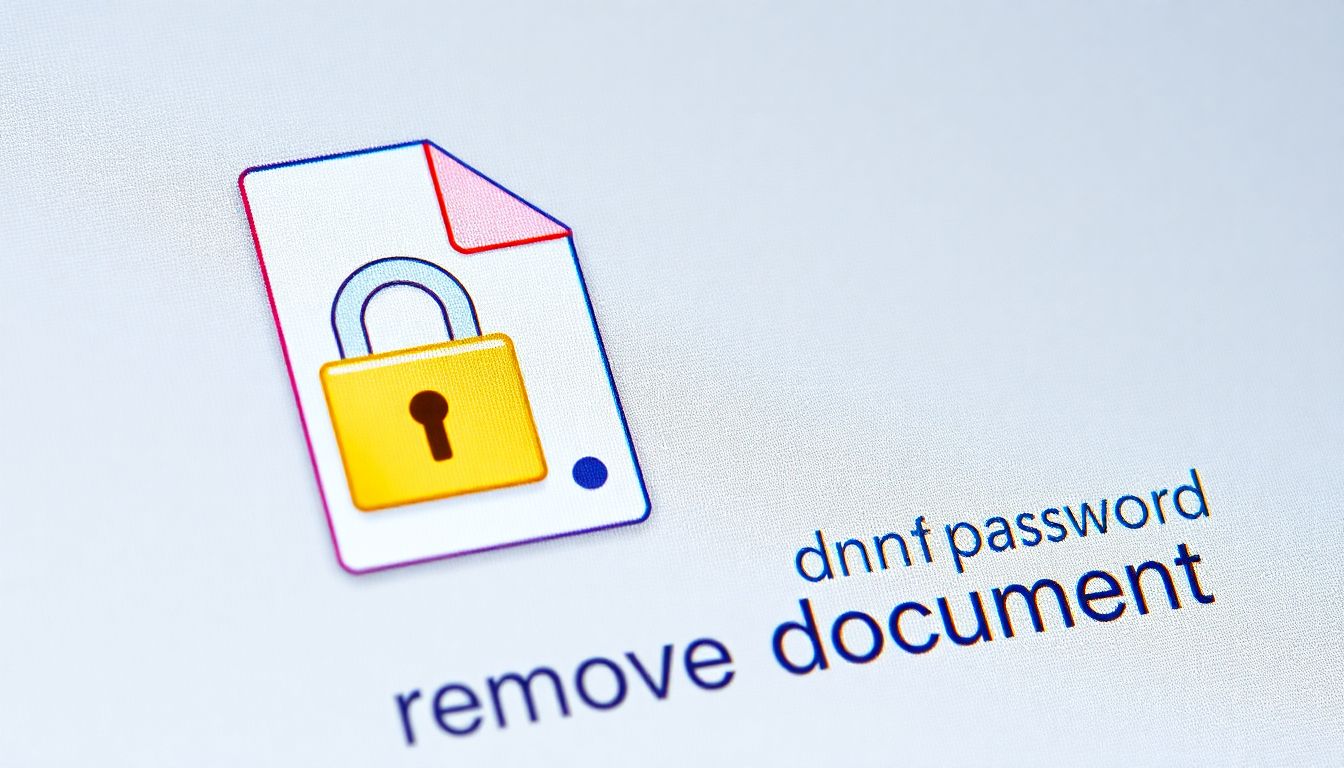How to Remove Password from PDF: A Step-by-Step Guide

Ever been locked out of your own PDF? It's frustrating, especially when you need the info inside, right away. PDF passwords are a pain, but don't worry! We'll show you simple ways to unlock those files and get back to work.
There are mainly two types of PDF passwords that you should know about. First is the "open" password, that restricts access to opening the document. The second is the "permissions" password, that restricts editing, printing, and copying of content.
In this article, we're going to look at how to get rid of PDF passwords. You'll learn to use tools like Chrome and Adobe Acrobat Pro. Always remember to respect copyright and legal rules when removing passwords. You should only remove a password from a PDF if you have permission!
Understanding PDF Password Security
PDF passwords keep your information safe. Different levels of security control who can see, change, or print a document. Passwords help protect sensitive data.
Open Password (User Password)
An open password, also called a user password, stops just anyone from viewing a PDF. When a PDF has this security, you must enter a password to even see the content. This is the first line of defense.
Permissions Password (Owner Password)
A permissions password, or owner password, is different. It lets you open the PDF, but it limits what you can do with it. You might not be able to print, copy text, or make changes. It protects the PDF's content from being altered.
Why PDFs are Password Protected
So, why lock PDFs in the first place? Confidentiality is a big reason. Passwords keep sensitive information away from prying eyes. Copyright protection is also important. It stops people from copying or changing someone's work without permission. Also, PDFs are often secured to protect document integrity. This ensures the file isn't changed without authorization.
Removing PDF Passwords with Google Chrome
Chrome is a simple, free way to remove an open password from a PDF. It's a handy trick. You don't need special software.
Opening the PDF in Chrome
First, open the password-protected PDF in Chrome. Simply drag the PDF file into a Chrome window. If it asks for a password, enter it. Now you can view the PDF.
Printing the PDF to a New PDF (Without Password)
Next, use Chrome's "Print to PDF" feature. Go to File, then Print, or press Ctrl+P (or Cmd+P on a Mac). In the print settings, choose "Save as PDF" as your printer. Click "Save." Chrome creates a new PDF without the password.
Limitations of This Method
This Chrome method is great for open passwords. It won't work if the PDF has a permissions password. It only removes the need for a password to view the file. You still can't edit or copy if those restrictions are set.
Using Online PDF Password Remover Tools
Online tools can remove PDF passwords, but be careful. They're convenient, but they come with risks. You upload your PDF to their website, and they unlock it for you.
Selecting a Reputable Online Tool
Choose a trustworthy tool. Look for sites with good reviews and a clear privacy policy. Make sure the site uses HTTPS to protect your data. A secure connection is key when uploading sensitive documents.
Uploading and Removing the Password
The steps are usually the same. Upload your PDF to the website. Enter the password if it asks for one. Click a button to remove the password. Download the unlocked PDF.
Privacy and Security Considerations
Think before you upload. Online tools might not be secure. Your PDF could be at risk. They might store your file or even share it. If the PDF has sensitive info, think twice.
Removing Permissions Password with Adobe Acrobat Pro
To remove a permissions password, Adobe Acrobat Pro is a good option. It requires a subscription, but it provides the most control. It's a reliable way to unlock your PDF for editing and printing.
Opening the PDF in Adobe Acrobat Pro
First, open your PDF in Adobe Acrobat Pro. Go to "File," then "Open." Find your PDF and select it. If it asks for a password, enter the permissions password.
Using the "Security" Settings
Now, remove the security settings. Go to "File," then "Properties." Click on the "Security" tab. If it says "Password Security," you can change it. Choose "No Security" from the dropdown menu. You might need to enter the permissions password again.
Saving the Unlocked PDF
Save the unlocked PDF. Go to "File," then "Save As." Give it a new name to keep the original safe. The new PDF won't have the permissions password. You can now edit, print, and copy it.
Troubleshooting Common Issues
Sometimes things go wrong. Here are a few common problems and how to fix them. These tips will help you handle snags while removing passwords.
"Incorrect Password" Errors
Are you sure about the password? Passwords are case-sensitive. Caps Lock can cause problems. If you're locked out, try a password recovery tool. Some software can help you find or remove a forgotten password.
File Corruption Issues
Sometimes, files get corrupted during the process. This can happen if the software crashes. It can also happen with online tools. Try opening the PDF in a different program. If that doesn't work, you might need to find an older version or a backup.
Unable to Remove Permissions Password
Not all PDFs can be unlocked. Some have strong security settings. If the PDF is heavily encrypted, you might not be able to remove the permissions password. In that case, you may need to contact the document's creator.






No comments: